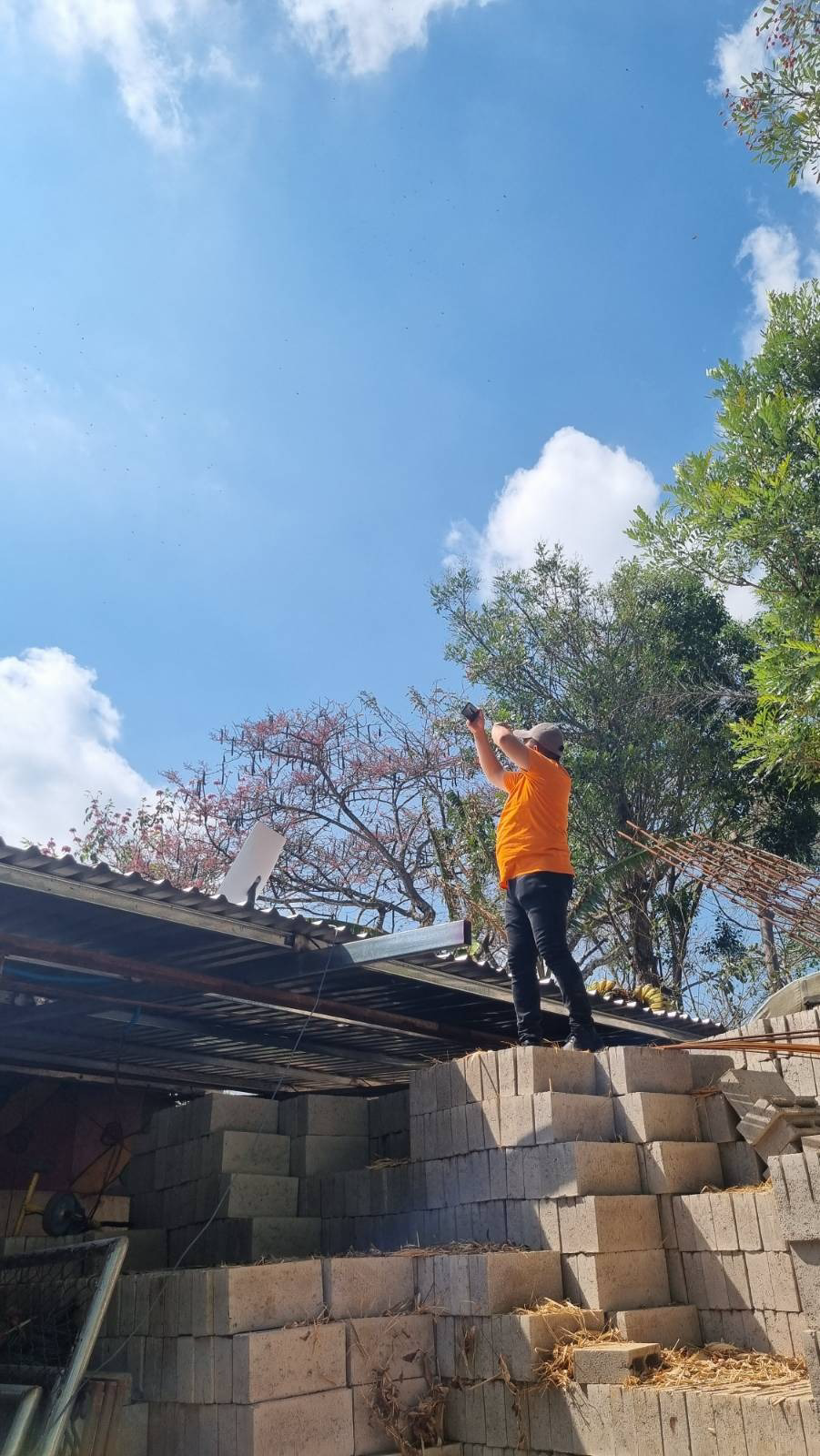Disclaimer:
Please be aware that the content herein has not been peer reviewed. It consists of personal reflections, insights, and learnings of the contributor(s). It may not be exhaustive, nor does it aim to be authoritative knowledge.
Title
Please provide a name for your action learning plan.
Exploring the benefits of rural connectivity
Challenge statement
Challenge type: If you are working on multiple challenges, please indicate if this is your "big bet" or "exploratory" challenge.
Please note: we ask you to only submit a maximum of 3 challenges - 1x Big Bet, 2x Exploratory. Each challenge must be submitted individually.
EXPLORATORY
Challenge statement: What is your challenge? (Please answer in specific terms: "Our challenge is that...”.)
Our challenge is to find out if there are affordable ways to bring connectivity to rural and historically excluded areas, and the opportunities that the connectivity can bring.
Background: What is the history of your challenge? What is causing or driving it? Who is involved? How does the current situation look like? What undesired effects does it produce?
We will work in Comasagua, a municipality that, despite having a well-connected urban centre, has several areas that are disconnected in terms of roads, services and the internet. Our last learning cycle we worked with La Canasta Campesina, a cooperative of organic farmers in Comasagua, and we were able to observe first-hand the lack of connectivity.
Quantitative evidence: What (official) data sources do you have on this challenge that better exemplifies the importance and urgency of this frontier challenge? You can add text, a link, or a picture.
In El Salvador, the digital divide is wider than in other countries in the region and, according to the EHPM 2021 (household and multi-purpose survey), only 28.6% of households had access to residential internet. In addition, this national statistic corresponds to the one we found in the field in Comasagua, as in the baseline we collected in our learning cycle with La Canasta Campesina, we discovered that 75% of the producers do not have access to the internet.
Qualitative evidence: What weak signals have you recently spotted that characterizes its urgency? Please provide qualitative information that better exemplifies the importance and urgency of this frontier challenge. You can add text, a link, or a picture.
In our learning cycle in Comasagua, despite the fact that most producers did not have constant and stable access to the internet, we discovered that WhatsApp is the most used and preferred method of communication. For example, alerts about natural disasters and any official climate information are shared through WhatsApp groups. These groups are also a favourite for farmers to communicate and coordinate commercial work. This is because, although internet access is poor and scarce, other services such as telephone and roads are in poorer condition. Bringing connectivity solutions could bring many benefits to these communities.
Value proposition: What added value or unique value proposition is your Accelerator Lab bringing to solving this challenge? Why is it your Lab that needs to work on this challenge and not other actors within UNDP, other stakeholders in the country respectively? Why is it worth investing resources to this challenge?
We have previously worked on connectivity in public spaces, so we bring lessons learned on connectivity to the table. Additionally, the demographic conditions in many areas of El Salvador make it difficult to make a "one size fits all" solution in terms of connectivity. This is why the methodology of learning cycles, learning as we go and being able to make iterations generates a great added value.
Short “tweet” summary: We would like to tweet what you are working on, can you summarize your challenge in a maximum of 280 characters?
Bridging the digital divide in rural areas is crucial for development. UNDP AccLabs in El Salvador explore affordable solutions to bring internet connectivity to underserved communities like Comasagua. Let's empower all voices and ensure no one is left behind. #DigitalTransformation #InternetForAll
Partners
Who are your top 5 partners for this challenge? Please submit from MOST to LEAST important and state Name, Sector and a brief description of the (intended) collaboration.
Please state the name of the partner:
La Canasta Campesina
What sector does our partner belong to?
Private Sector
Please provide a brief description of the collaboration.
La Canasta Campesia is an organic farmers co-op and will be the community link to Comasagua. It will help coordinate field visits, learn about the needs of the population, etc.
Is this a new and unusual partner for UNDP?
Yes
Who are your top 5 partners for this challenge? Please submit from MOST to LEAST important and state Name, Sector and a brief description of the (intended) collaboration.
Please state the name of the partner:
Conexión al desarrollo de El Salvador
What sector does our partner belong to?
Civil Society
Please provide a brief description of the collaboration.
CONEXION al Desarrollo de El Salvador: Is a non-profit organization that promotes the use and application of Information and Communication Technologies, contributing to poverty reduction and facilitating business development. They will be our technical allies in bringing connectivity to Comasagua. At the moment we are evaluating doing it through Starlink.
Is this a new and unusual partner for UNDP?
No
Learning questions
Learning question: What is your learning question for this challenge? What do you need to know or understand to work on your challenge statement?
Are there low-cost “last mile” connectivity modalities that can be implemented in a rural territory of El Salvador?
What is the cost of an alternative modality (to the mobile network) of connectivity, and could this be covered by the community?
How long does it take to have connectivity enabled in a community for it to be used?
What type of support/training does the population require to take advantage of connectivity?
Can other actors acquire the capacity to develop a connectivity initiative for other rural territories? (Is this “new modality” viable to be adopted and promoted by communities or grassroots organizations/CBO?)
What opportunities are adopted or taken advantage of more when there is connectivity?: What elements promote the use of the opportunities (education/training, health, marketing, entertainment, etc.) that are enabled?
What would happen if the rural communities in the La Canasta Campesina sector had connectivity?: What digital skills do farmers require? What elements of cooperative production (dynamic of work of La Canasta Campesina) can be improved with connectivity?
To what stage(s) in the learning cycle does your learning question relate?
Sense, Explore, Test
Usage of methods: Relating to your choice above, how will you use your methods & tools for this learning question? What value do these add in answering your learning question?
Ethnography: We will immerse ourselves in the lives of farmers in Comasagua to gain a firsthand understanding of their experiences with digital access, tools, and internet connectivity. This immersive approach will provide us with valuable insights into their challenges, needs, and perspectives.
Solutions Mapping: We'll use this method to visualize the current ecosystem of available solutions applied by the communities to move around without internet connectivity. Mapping out existing grassroots solutions helps us pinpoint where improvements and innovations can be made.
Behavioral Insights: Understanding the behaviors and decision-making processes of farmers enables us to design a more effective intervention. By uncovering the underlying motivations and barriers to adopt digital behaviors, we can tailor more effective solutions that resonate with their needs and preferences.
Prototyping: Prototyping will allow us to quickly test and iterate potential solutions in the field. By creating low-cost versions of a digital basket for farmers in rural areas and scaled-down connectivity solutions, we can gather feedback from users and refine our approach based on their input.
Closing
Early leads to grow: Think about the possible grow phase for this challenge - who might benefit from your work on this challenge or who might be the champions in your country that you should inform or collaborate with early on to help you grow this challenge?
The CO might incorporate the learnings from this challenge in the creation of new projects. Also the Innovation Secretariat might be particulary interested in the learnings, as they have a digital and connectivity agenda.
END OF ACTION LEARNING PLAN: Thank you! The form saves automatically and your submission has been recorded. You may now exit this window.


 1
1
 10Reduced innequalities
10Reduced innequalities 11Sustainable cities and communities
11Sustainable cities and communities
Comments
Log in to add a comment or reply.